Best PHP Course in Pune - Full Stack Development Training with Job Assistance
ECTI offers the best PHP training in Pune, including a comprehensive Full Stack Development PHP course. Unlock endless career opportunities as a skilled PHP developer with Lifetime Job Assistance. Learn PHP web development, frontend technologies, and database management. Our expert instructors, real-time projects, and hands-on learning will equip you to build dynamic web applications. Join our PHP course in Pune today and pave your way to a successful career in web development and Full Stack Development!
Certified Trainers - Real-time Projects -Personalized Mentorship -Lifetime Job Assistance with placement -100% Practical Sessions -Flexible Learning Modes -Comprehensive Curriculum -Industry Recognized Certification -Mock Interviews & Resume Building -Internship Opportunities -Placement Assistance

4.9/5
Java Full Stack Reviews
Hurry Up!
batch is starting soon...
only 5 seats are available for this batch
Advantages
- Lifetime placement assistant Till You Get A Job
- Unlimited Placement Calls
- Affordable cost
- 10+ years industry experienced trainers

10000+ Happy Students.

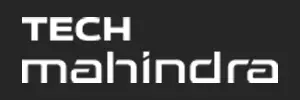
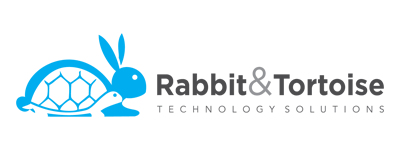
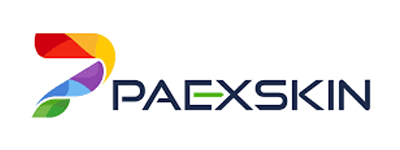

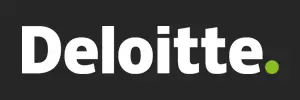

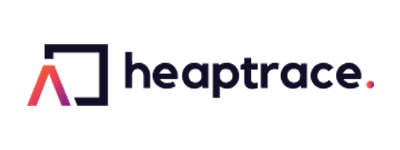
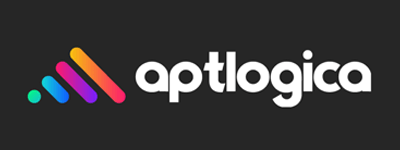
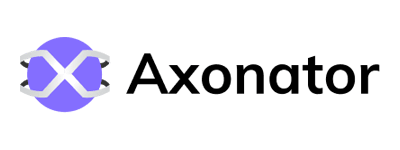
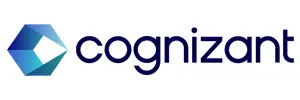

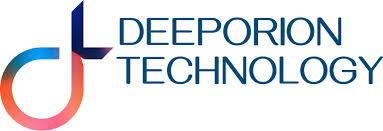




Sahil Sayyad
Consociate Solution Pvt Ltd
Front End Web Developer
January, 2025
Vishwakarma College of Arts, Commerce and Science
M.Sc (Computer Science) - 2023

Sakshi Vijay Malvadkar
Capgemini
Software Developer
December, 2024
Modern Education Society's Wadia College of Engineering Pune
BE - 2024

Piyush Yadav
Future Tech Design Solutions Pvt. Ltd. Gurugram.
Digital Modeler Class A
December, 2024
University of Engineering and Management, Jaipur (Rajasthan)
B. Tech (Mechanical Engineering) -2021

Shubham Sawalkar
Studio Key designs LLP
CAS Modeller
September, 2024
Symbiosis Skill & Professional University
B.Tech.(Automtion ) - 2021
Comprehensive PHP Course in Pune: Master PHP Web Development and Start Building Dynamic Websites
Our PHP course in Pune offers a comprehensive introduction to PHP programming, a powerful server-side scripting language used for web development. Ideal for beginners with no prior programming experience, this course will help you master PHP and start building dynamic, interactive web applications.
You will learn essential PHP concepts, including variables, data types, control structures, functions, arrays, file handling, and more. The course covers working with databases using MySQL, form handling, and integrating PHP with HTML and CSS to create dynamic, responsive web pages.
Additionally, you’ll explore session management, error handling, and security best practices for PHP development. By the end of the course, you’ll have hands-on experience through coding exercises, real-time projects, and a strong foundation in PHP to build professional websites.
Whether you aspire to become a PHP developer or enhance your web development skills, our PHP course in Pune will equip you with everything you need to create powerful, dynamic websites.
Key Features of PHP Course in Pune: Unlock Your Full Potential with Expert-Led Training

Certification of Completion
Earn a shareable certificate upon course completion to showcase your skills to potential employers.

Online and Offline Classes
Choose between online or offline PHP classes in Pune for maximum flexibility.

No Prior Experience Required
Whether you're a beginner or intermediate developer, this course caters to all skill levels and prepares you for real-world PHP development.

Comprehensive Course Duration
With 600+ hours of training, including real-time projects, you'll gain both theoretical knowledge and practical experience.

Personalized Mentorship
Receive one-on-one mentorship from industry experts who will guide you throughout your learning journey.

Hands-On Learning
Work on 10 lesson-end projects and 4 phase-end projects to apply your PHP skills in building dynamic websites and applications.
Why ECTI?
Lifetime Job Assistance
With our Lifetime placement assistant courses, you can achieve your career goals.

Cost Effective
We know how much money you need to invest in getting technical knowledge. Thus we have made sure the courses we provide are not just the best but also absolutely cost effective.
Industry Experts Lectures
With our Lifetime placement assistant courses, you can achieve your career goals.
Free Interview Training
Interview technique is a major hurdle for students trying to get a job. At Envision, we ensure your development.
Mock Interviews
We also make sure that a fresher isn't a fresher when it comes to his interviews from experts and people actually working in HR at various renowned companies.
Most Updated Syllabus
We are proud to mention that our syllabus is updated every quarter.

Complete PHP Course syllabus
Learn the basics of web page creation using HTML and CSS. Build structured, visually appealing, and responsive web pages.
Key Topics:
- Semantic HTML elements and best practices.
- Styling with CSS3, including animations and transitions.
- Responsive layouts with Flexbox and Grid.
- Building accessible and SEO-friendly web designs.
Bootstrap is a powerful framework that simplifies responsive web design, enabling developers to create adaptive and mobile-friendly websites.
Key Topics:
- Using the Bootstrap grid system for responsive layouts.
- Leveraging prebuilt components like modals and navigation bars.
- Customizing themes and utilities for unique designs.
- Best practices for cross-device compatibility.
JavaScript is essential for adding interactivity to web pages, while JQuery simplifies JavaScript coding for enhanced efficiency.
Key Topics:
- Core JavaScript concepts: variables, loops, and events.
- DOM manipulation and dynamic content updates.
- jQuery for streamlined animations and AJAX calls.
- Real-time validation and form handling.
PHP is the backbone of dynamic web development, and this module takes you from the basics to advanced concepts for professional-grade applications.
Key Topics:
- PHP syntax, variables, and functions.
- Advanced PHP topics like file handling, sessions, and cookies.
- Error handling and debugging techniques.
- Building dynamic and secure web pages.
Master the principles of Object-Oriented Programming (OOP) in PHP for reusable, efficient, and scalable code.
Key Topics:
- Classes, objects, and methods in PHP.
- Inheritance, encapsulation, and polymorphism.
- Implementing design patterns in PHP applications.
- OOP best practices for modular code.
Understand database management with MySQL to store and retrieve data effectively for your PHP applications.
Key Topics:
- Creating and managing databases and tables.
- CRUD operations and data relationships.
- Optimizing queries and indexing for performance.
- MySQL security and backup strategies.
Learn to build robust and maintainable applications using PDO, the MVC design pattern, and the Laravel framework.
Key Topics:
- PDO for secure database interactions.
- MVC architecture for separating concerns in web apps.
- Laravel fundamentals: routing, controllers, and Blade templates.
- Advanced Laravel features: authentication, middleware, and Eloquent ORM.
PHP Full Stack Development Certification: Kickstart Your Career
Enroll in ECTI’s PHP Full Stack Development Professional Certificate and gain essential skills to become a successful web developer. This course covers PHP, HTML, CSS, JavaScript, MySQL, Bootstrap, and more, equipping you with both front-end and back-end development expertise.
Hands-On Projects & Career Support Gain real-world experience through hands-on projects, building a portfolio that showcases your skills. Upon completion, earn a professional certificate and access lifetime job assistance, including interview prep and career guidance.
Start your journey today and unlock a rewarding career in Full Stack Development with our PHP course!

PHP Full Stack Developer Placement Assistance: Launch Your Career
Enroll in our PHP Full Stack Development course in Pune and secure your dream job with Lifetime Job Assistance. Our training equips you with in-demand skills and offers placement support to help you land jobs in top tech companies with salaries ranging from 3.5 to 7.00 LPA. Our alumni are successfully working at prestigious companies like TCS, Cognizant, and Capgemini.

Personalized Career Support
Receive tailored guidance from expert trainers and coordinators who will help you with interview skills, resume building, and portfolio development.

Mock Tests & Mock Interviews
Prepare for success with industry-relevant mock tests and simulated interview sessions. Receive constructive feedback to refine your skills and boost your confidence.

Profile Matching & Placement Assistance
We match your profile with the best job opportunities and provide access to 500+ recruitment partners actively hiring Full Stack Developers, ensuring you’re job-ready.

Soft Skills & Salary Negotiation Training
Strengthen your soft skills and learn salary negotiation tactics to secure a position at your desired salary with industry-standard compensation.
Start your journey to becoming a PHP Developer today and gain the expertise to thrive in the competitive tech job market.
Learn from Certified PHP Trainers with Real-World Experience
At Envision Institute in Pune, our PHP Full Stack Development trainers are certified professionals with over 7 years of experience in the field. They are currently working with top MNCs, bringing real-world insights and expertise to the classroom. Our trainers utilize live projects and real-time examples to provide hands-on learning, ensuring that you gain practical skills that are directly applicable to the tech industry.
Our trainers are dedicated to your success, offering personalized support to resolve doubts and provide tailored guidance. They also assist students in preparing for technical and HR interviews, helping you build the confidence and knowledge needed to excel in your job search. Join our PHP course to learn from industry experts and enhance your career as a Full Stack Developer.

Our students words speaks for us
FAQ's
Is PHP good for full stack developer?
What skills required for PHP Full Stack Developer?
What is the salary of a full stack PHP developer in India?
Is PHP enough to get a job?
Which job is best in PHP?
1. Junior PHP Developer
It is the starting position for a software engineer. The engineer is responsible for writing, analyzing, testing, and debugging the code in this position. They are generally a part of a team with leaders and mentors to whom they have to report.
As this is the developer’s first job, they must focus on getting familiar with all the industry practices and standards at this stage. One must also focus on developing new skills to get better at their craft and thus make it easier for them to have a better position in the same company or switch to a better company. It is one of the good PHP career opportunities.
2. Senior PHP Developer
The complete charge of a project is what generally a senior developer is responsible for. In addition, they report to the company’s executive officers and managers and write some code. They are also accountable for mentoring the developers that are new to the company or the project they are working on. It is seen as the standard job position for a developer.
3.PHP Architect
The responsibility of a PHP architect is to design and develop the application’s layout. They classify the different logic layers, which further helps separate concerns among the team members working on the project.
The expectation from the architect is to develop the best technologies that are well-matched for the software to be built and ensure their compatibility with each other.
These job postings are generally posted by top companies that don’t need a PHP programmer who can do several things but just a programmer skilled in a particular area to optimize and enhance an existing product. Apart from these, field-specific job postings require the programmer to be effective in a particular set of things. These include jobs like.
1. PHP Web Developer
A PHP web developer is usually at a backend position, and the responsibilities include deployment and maintenance of the server-side code. It is very helpful if you know the basics of cloud computing as cloud-based systems are growing fast in the industry.
8. Full stack PHP Developer
If you are interested in working on web applications, you may consider a position as a full-stack Java developer. Full-stack PHP developers often lead web development teams that design new websites and update existing ones. Developers may create web-based applications for a company or work with many businesses as a consultant. As consultants, they may provide advice and complete tasks for businesses using their various skills related to web-based programming. You must have the following skill to become a full-stack developer.
In-depth understanding of how to design front-end frameworks
Must have testing ability
Friendly with microservices and implement them in an application
One must be familiar with various tools. It increases efficiency and works with a variety of web technologies. DevOps tools like Docker, Ansible and AWS help developers create applications quickly by helping them plan, test and monitor their code
One must have extensive knowledge of libraries and understand how to create APIs within the code they write.
9. Freelancing
Various freelance websites present on the Internet like LinkedIn have made Freelancing easy and made networking with clients very fast using different online platforms. Freelancing can also work as a part-time Java career opportunity. It helps you in getting experience & add it to the CV as well.
But freelance isn’t that easy and comes with its challenges such as:
Less pay at the start
High competition
Irregular frequency of work
Demanding clients
Freelance work for Java developers can generally be categorized into two types, centered at two different kinds of freelancers. Coding Jobs: These are the gigs where you are required to work on a project or develop a new feature. These jobs are a very good start for your career. Fortunately, these jobs are mostly remote. You can freelance as a Java web developer or a Java app developer.
10. Consulting Developers
Those who have some years of experience in the industry usually get hired as developers. These jobs are generally posted by companies working on a short deadline targeting the launch or enhancement of a product or feature. These jobs are generally on-site work, and freelancers are part of the projects team. The contract ends at the end of the project.
Related courses

Full stack development course

Latest Job Opening

New Course

Hello world!
